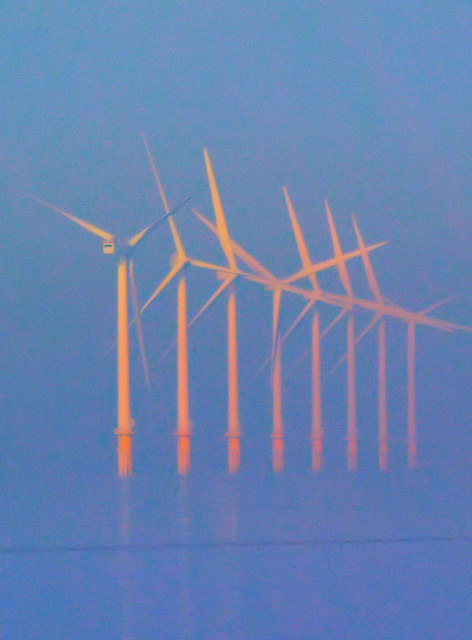Offshore wind farms: grids and gridlock

As offshore wind farms, such as Cape Wind, continue to be stalled off our nation's coastlines, a new study creates a strategy for gleaning the most energy from them—should they ever come online.
 The research, published today in the Proceedings of the National Academy of Sciences, suggests that building a grid for wind turbines at sea could increase the reliability of the renewable power.
The research, published today in the Proceedings of the National Academy of Sciences, suggests that building a grid for wind turbines at sea could increase the reliability of the renewable power.
For five years, the researchers monitored wind patterns at 11 stations between Maine and Florida. Given the wind speeds observed, they estimated how much power a five-megawatt turbine would generate at each site at each hour, if it existed. The scientists, from University of Delaware and Stony Brook University, also took into account the area's seasonal wind fluctuations.
What they discovered is every location had the expected highs and lows of wind energy production. But after they simulated a grid connecting these hypothetical wind farms, overall energy flow became more consistent. While energy output went up and down, not once did it hit zero.
In a statement, Brian Colle of Stony Brook University describes one wind farm arrangement that he thinks would work well:
A north-south transmission geometry fits nicely with the storm track that shifts northward or southward along the U.S. East Coast on a weekly or seasonal time scale. Because then at any one time a high or low pressure system is likely to be producing wind (and thus power) somewhere along the coast.”
Non-hypothetical wind farms, however, have been facing many obstacles in their path to construction.
Two potential offshore wind projects in New England experienced setbacks last week. On Tuesday, Rhode Island's Public Utilities Commission ruled the proposed purchasing price for electricity from a proposed 8 turbines off of Block Island was too high (at 24.4 cents/kilowatt-hour). Despite strong support from the state's governor, the commisioners deemed it "commercially unreasonable".
On Friday, a federal advisory panel urged the U.S. Interior Department to stop the Cape Wind project off Massachusett's Cape Cod. Opposed by historical preservation, cultural and tourism societies, this $1 billion project would have 130 turbines capturing the wind above Nantucket Sound.
Interior Secretary Ken Salazar, however, does not have to heed the panel's request. Further, blocking an offshore wind project in the same week they green-light offshore drilling would be an interesting move for the Obama Administration.
This post was originally published on Smartplanet.com